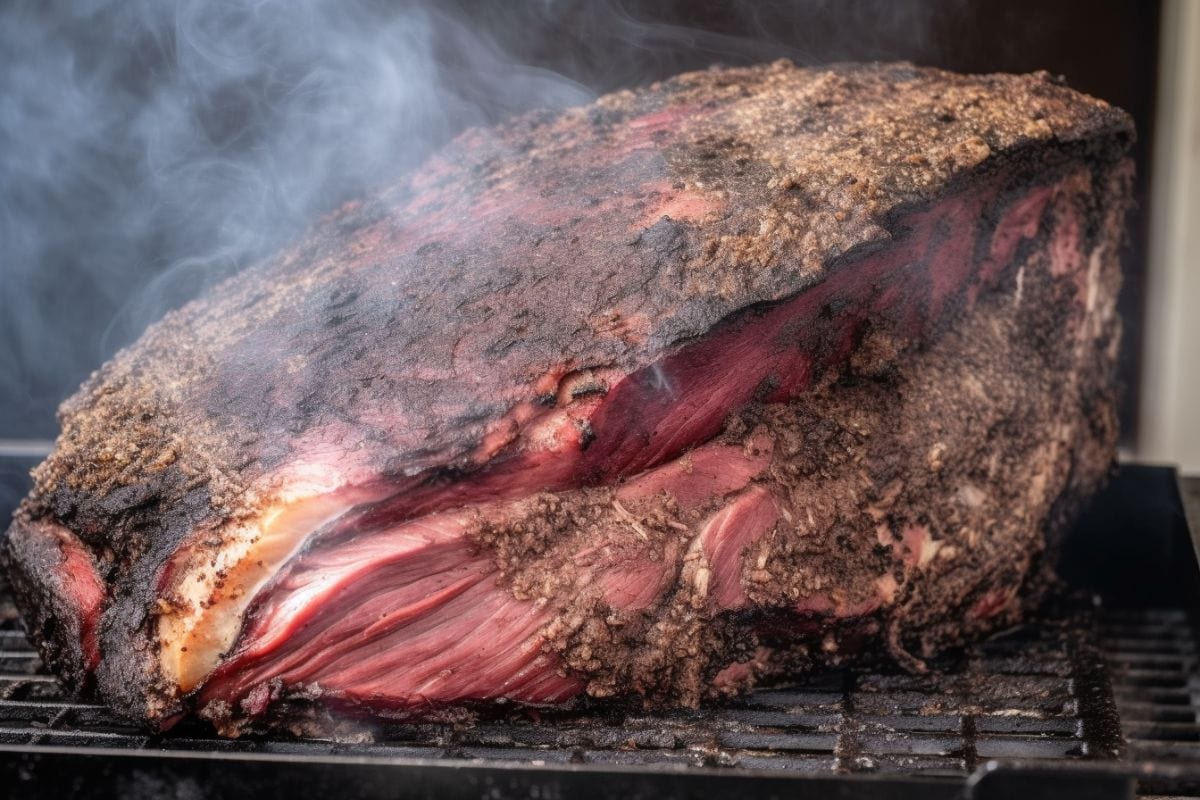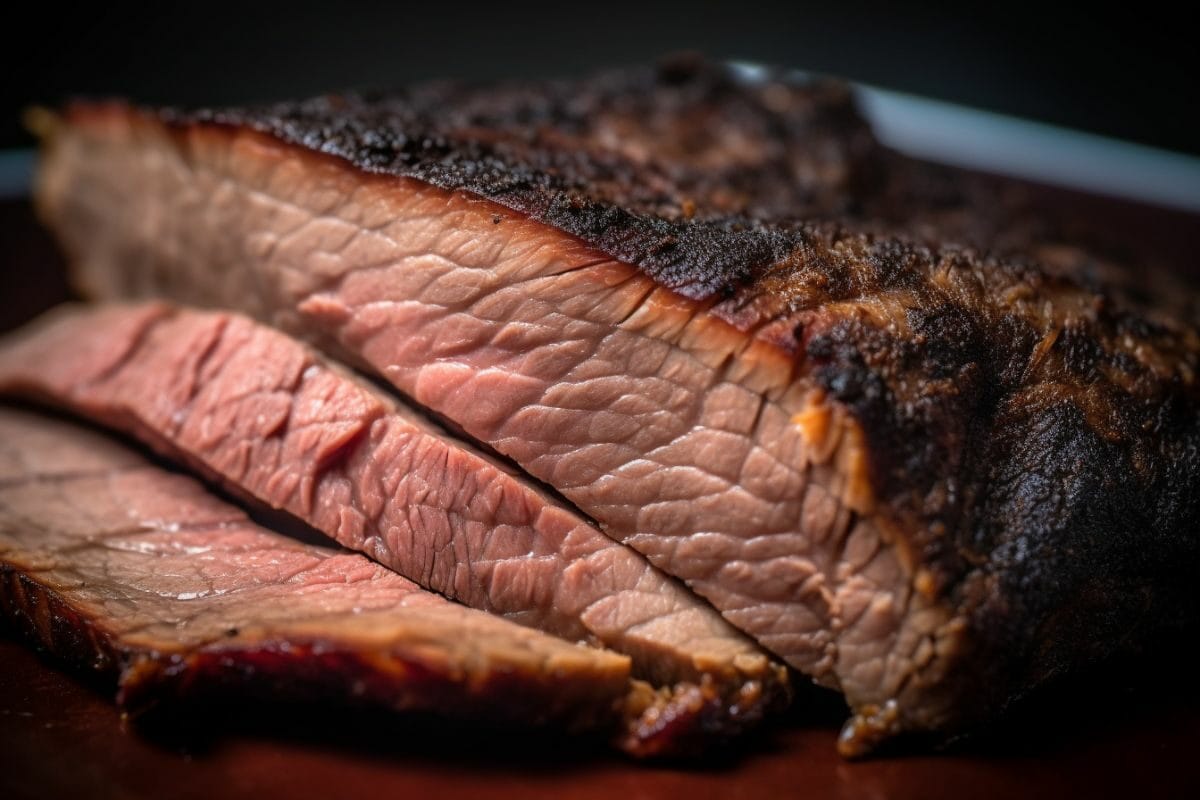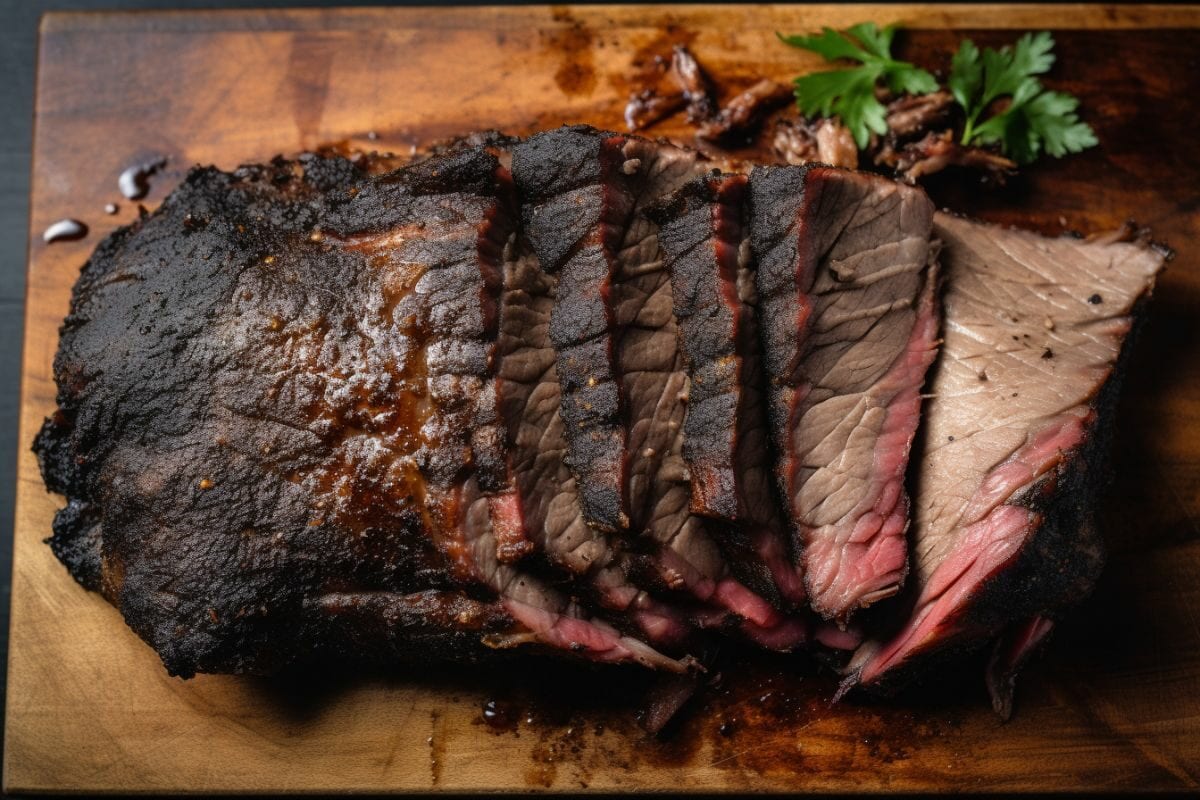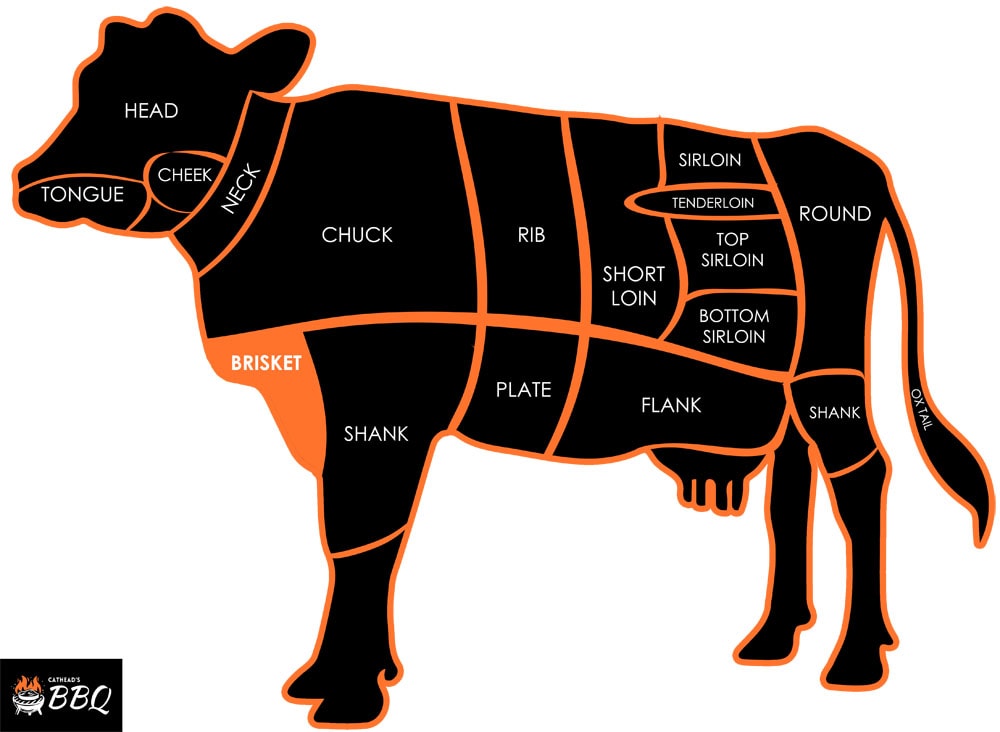If your brisket is finished cooking and your guests aren’t showing up for hours, you can rest it in a cooler, refrigerate it then reheat it, or transform it into burnt ends. You can also hold it in your oven at 170°F. Don’t beat yourself up over having your brisket done early. It happens!
I’ve worked for over a decade as the pitmaster at a popular barbecue joint. I’ve had many briskets finish early on me, and I’ve had to hold them. At work, I use a commercial hot box to keep holding temperatures above 140°F, but you can hold brisket just as well at home without one!
In this post, I will show you how to know when your brisket is done and several techniques you can use to hold the brisket. I will also discuss resting a brisket, the dreaded stall, and much more. Join me!

Yes, you can cook a brisket early and rest it before slicing and serving. In fact, the rest makes the brisket juicier and gives you some wiggle room if your brisket finishes cooking early.
Many grilling enthusiasts will say that your brisket needs to cook for an hour at low and slow temperatures of 225°F per pound.
While they’re not wrong, exactly, the problem is that cooking times with BBQ are notoriously fickle. The stall, external temperatures, humidity, your cooker, the piece of meat, and a bunch of other factors can alter the cooking times so much you might pull your hair out.
The key to becoming a successful pitmaster is embracing the unknown. You’re smoking brisket. You’re in for a full day of cooking.
Because the exact cooking time is uncertain, it’s easy to have a brisket that’s fully cooked to 203°F long before you are prepared to serve it. If that’s happened to you, you’re in the right place. I’ve got solutions.
You can employ the cooler method, the oven method, the rest and reheat method, or make things interesting and prepare burnt ends. Let’s look into each of these solutions:
If your brisket is done too early, try the cooler method. In fact, I use the cooler method every time I make brisket. It makes the meat juicier and more tender. The cooler method is my preferred technique to use if your brisket is done too early. It goes like this:
Around 20 minutes before you take your brisket off the smoker, add a tea kettle of boiling water into a cooler and shut the lid. This step preheats the cooler.
After your brisket is done, drain the hot water from the cooler and wipe it dry.
Wrap your brisket with heavy-duty foil or butcher paper tightly to preserve the heat in the meat. (Note: some outdoor chefs leave their wrap vented – this allows steam to escape and makes a harder bark. I don’t vent. Play around with both to see what works for you.)
Re-wrap the brisket with a thick towel or a clean blanket and lower it into the cooler.
If you have a meat probe, feel free to put it in the meat, making sure to run the wire out of the cooler. Close the lid until you’re ready to serve.
The Faux Cambro should maintain the internal temperature of the brisket above 140°F for hours. Rest for at least 2 hours, up to 4.

Resting and reheating is another easy solution. It is hands-off and very forgiving.
Simply let the brisket rest until its internal temperature range is between 145°F and 150°F. Don’t let the temperature fall any lower to stay clear of the danger zone.
If you still need time before serving it, you can stick the brisket in the fridge. Keep it in the fridge until an hour before you’re ready to serve.
Then preheat the oven to 275°F.
Place your meat in an oven-safe dish and tent it with foil.
Put it in the oven and let it cook undisturbed until the internal temp gets to 160°F.
Carve and serve.
Related Reading
Many barbecue spots use a commercial hotbox, called a Cambro, to hold their meat. It’s designed to store a lot of meat at the preferred temperature for as long as is necessary.
We can replicate the hotbox effect by using an electric oven as your holding oven for up to eight hours.
Set the temperature of your electric oven to the lowest it can go. For most brands, this will be 170°F. If your oven can go lower than this, take advantage of this feature. Stay away from the danger zone – don’t go below 150°
When your brisket is done, transfer it onto a roasting pan and add any drippings reserved from your cook.
Tent it tightly with aluminum foil.
Put the brisket in the holding oven and let it rest undisturbed. This should keep your brisket above 140°F without drying until you can serve.
Related Reading
If you have a few hours to kill, why not whip up some burnt ends? When life gives you lemons, you’ve got to make lemonade, right?
If I know I’m going the burnt ends route, I pull the brisket from the cooker at around 190°F. That way, they don’t get overcooked.
Next, cut the meat into one-and-a-half-inch cubes. Try to cut them into uniform sizes to give them a handsome appearance, and so they cook at the same rate.
In a grill pan, coat the pieces generously with barbecue sauce. I use Traeger 'Que BBQ Sauce because it pairs well with beef.
Put the grill pan of burnt ends back on the smoker at 250°F for 1 to 2 hours, until the BBQ sauce has been absorbed and the beef is caramelized. Their internal temp should be around 203°F.

The beef brisket is cut from between the forelegs of a cow’s carcass and is comprised of the pectoral muscles of a steer.
Since this part gets a lot of exercise and supports the weight of the steer, it is rich in collagen. Collagen is a protein in the body that is rich in connective tissue. It’s responsible for both the strength and structure of the animal.
Cuts that are rich in collagen will be tougher and demand longer cooking times compared to other cuts.
The brisket is made up of two muscles: the flat and the point.
Both pieces are best suited to low and slow cooking methods that allow the collagen to render and transform, leaving you with unbelievably tender beef.

The USDA recommends cooking brisket to an internal temperature of 145°F as measured by a meat thermometer. That said, any pitmaster worth their tongs will tell you that, at this temperature, the meat is still tough and uninviting.
If you hope to end up with toothpick-tender beef, you will have to cook the brisket to an internal temperature of 190°F-210°F. I usually pull mine from the smoker at 203°F.
This is sufficient time for the heat to break down the connective tissues of the brisket and render the fat, making it flavorful and delicious.
While you can technically leave cooked brisket out overnight in a warm oven, I prefer to stick it in the fridge and reheat it. Leaving brisket in an oven for 8 plus hours is going to dry out that beautiful piece of meat. In my opinion, you’re better off sticking the cooked brisket in the fridge and reheating it before serving. It’ll be much juicier.
If you choose to ignore my advice (how dare you!), set the oven temperature to 170°F or below. Again, subjecting a cooked brisket to another 8 hours of heat is going to make it painfully dry, tough, and chewy. Go this route, and you’ll get bad brisket.
A perfect brisket is cooked slowly to 203°F over low heat (225°F). This is because it takes hours for the heat to render the tough connective tissue to soft gelatin. If you don’t cook it long enough, it will be a tough bite of expensive meat. However, if you cook it too long, it dries out.
Patience is an essential tool when cooking brisket, and it’s rewarded with fall-apart goodness. It’s worth every hour.
At 225°F, it will take around 1 hour to cook 1 pound of brisket. 225°F is the ideal temperature to smoke brisket at. If this is your first time cooking brisket, this is the temperature I think you should aim for.
At 250°F, figure 45-50 minutes of cooking time per pound.
Related Reading
The stall refers to a duration during cooking your brisket, where the temperature stops rising. This could last for 2 to 6 hours on big cuts of meat and has been known to drive pitmasters to tears.
This comes down to the science of evaporation. Essentially, the brisket is sweating in the smoker. Smoking brisket forces all its moisture, beginning from the core and moving upwards toward the surface of the meat.
As this liquid evaporates from the meat, the surface begins to cool. This process is known as evaporative cooling.
The stall is normal and occurs between temps of 150°F and 170°F. You can wait it out since the temp will start to rise again.
If you don’t like waiting, consider wrapping your meat tightly in aluminum foil or butcher’s paper while cooking. This technique is known as the “Texas crutch.”
When the meat is wrapped, moisture will not be able to evaporate into the cooker, evaporative cooling is stopped, and your brisket will start to climb in temperature again.
Wrapped brisket will take less time to get to the target temp.

Resting is the final cooking phase for grilled or smoked meat, but it’s just as important as the rest.
As your brisket cooks, its muscle fibers contract, forcing out liquid. Resting it gives the meat a chance to redistribute these fluids throughout the cut.
If you carve your meat before resting, the meat’s juices will pour onto your cutting surface, and you will end up with a fairly dry brisket.
When you take your meat off the heat, rest it for at least 2 hours in a cooler before cutting into it. I usually wrap my brisket in butcher paper (if I didn’t crutch it) before resting.
Wrapping your brisket too early will keep it from absorbing the aroma and the smoky flavor of the wood. Wait until you hit the stall, between 150°F and 170°F, before wrapping.
If your brisket gets done too early, there’s no cause to sound the alarm. Just consider how long you have to hold it and employ the appropriate method of holding the brisket.
With these guidelines, you can’t go wrong! Brisket is the holy grail of BBQ. Follow my advice, and you’ll be serving fantastic slices of beefy glory to your friends and family.